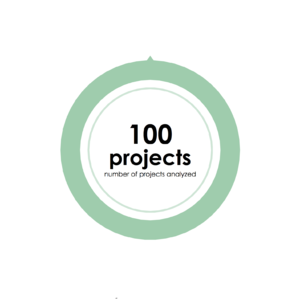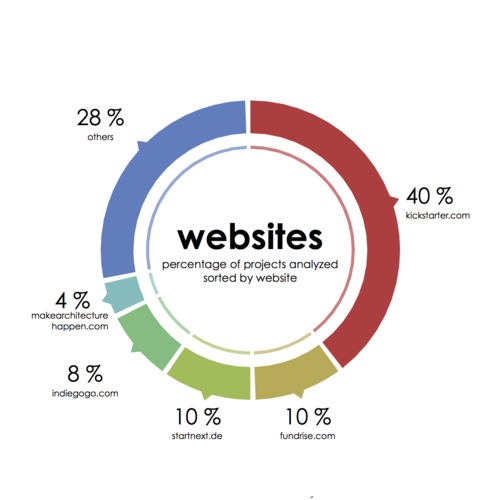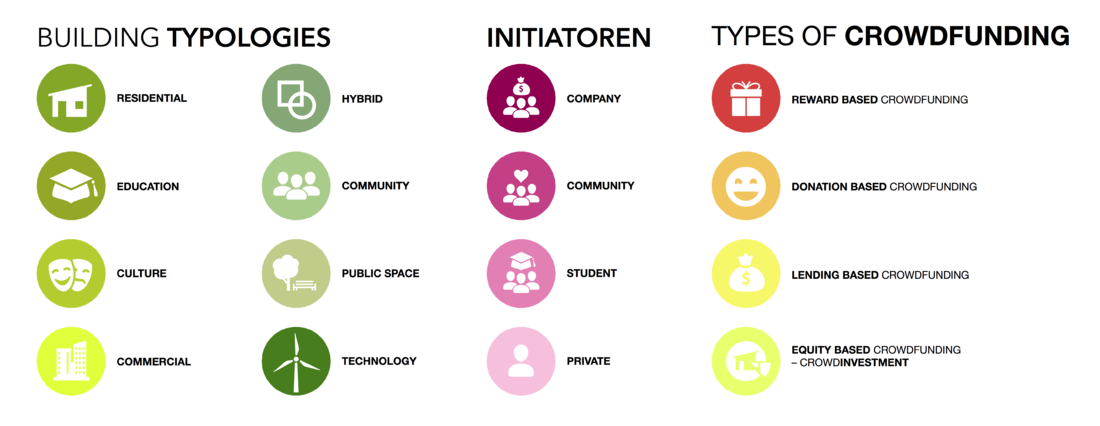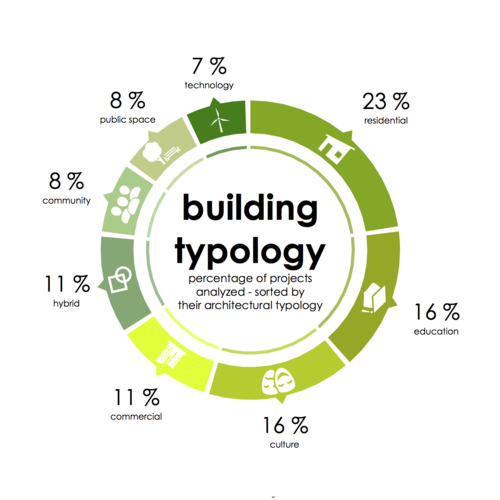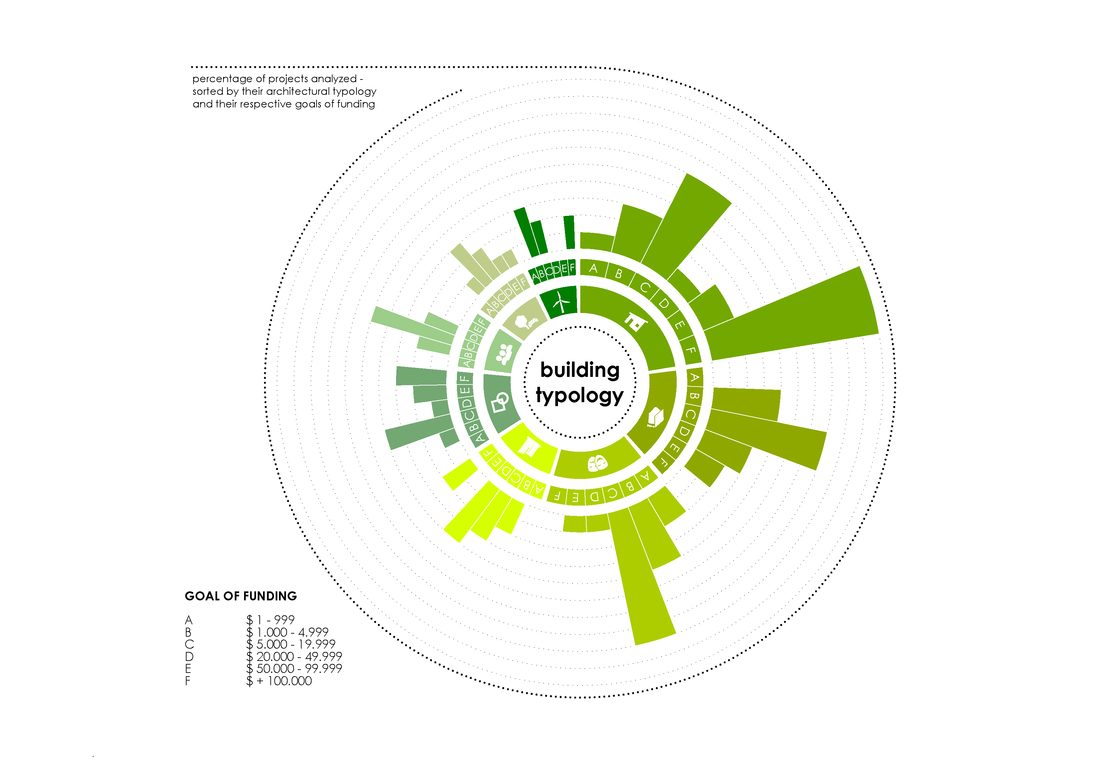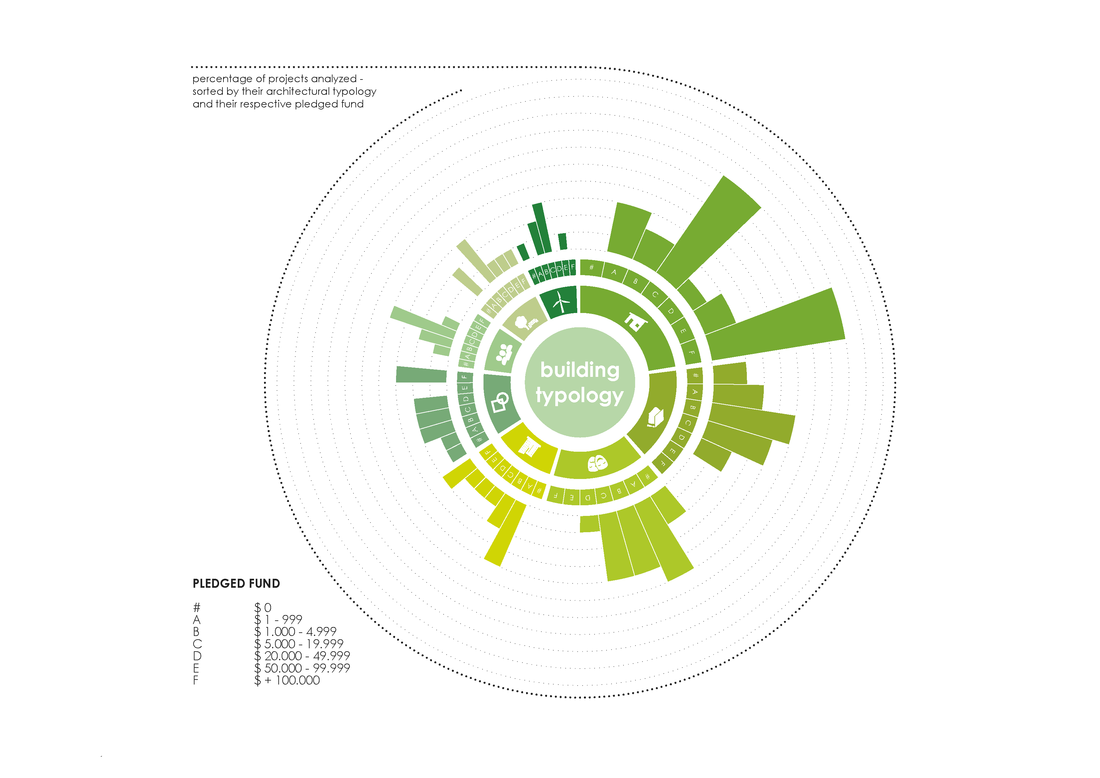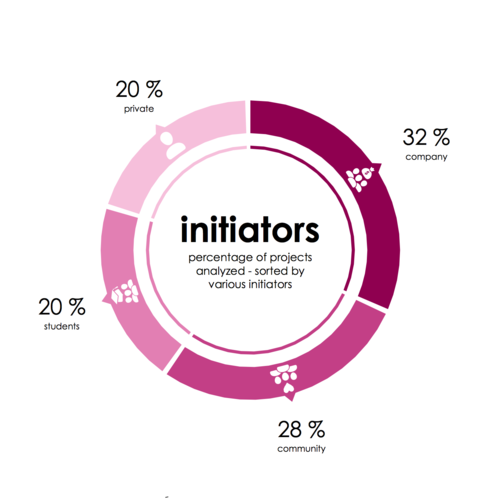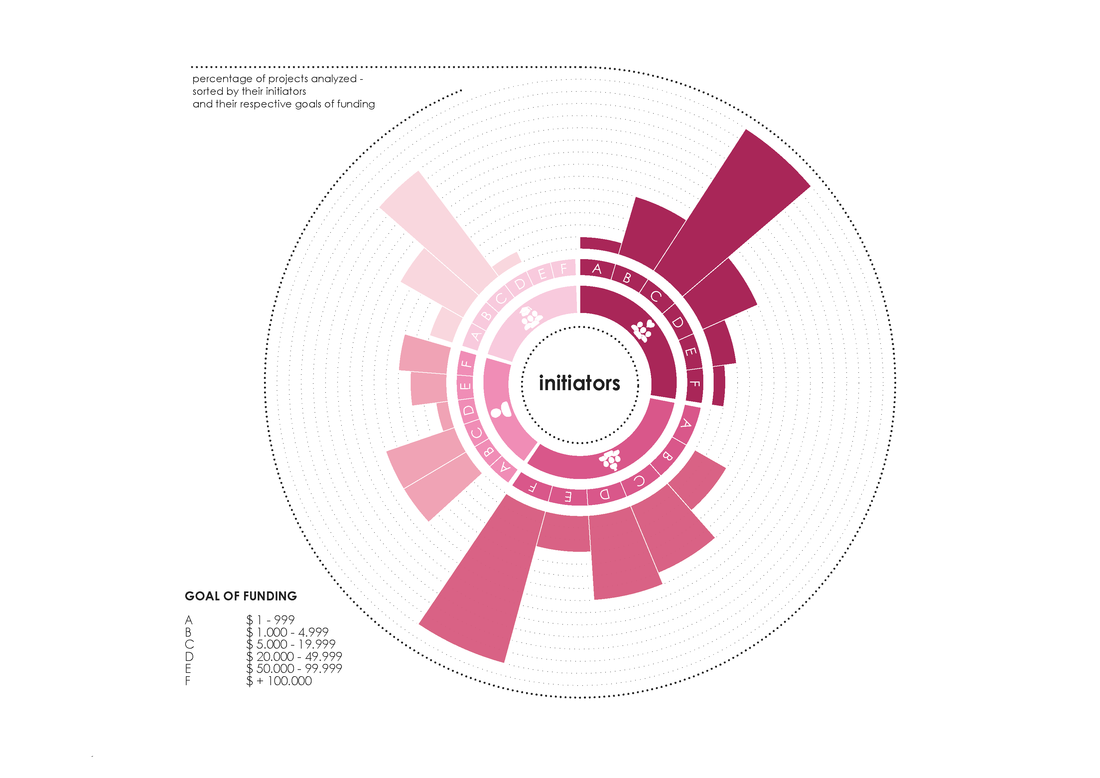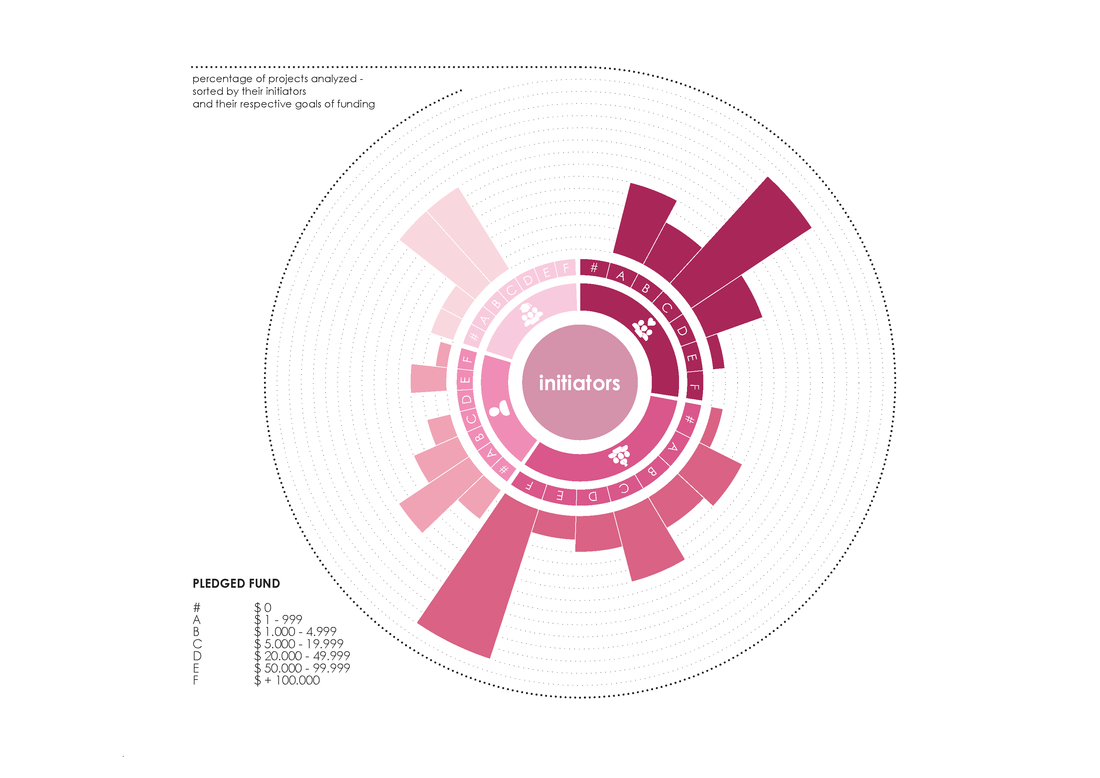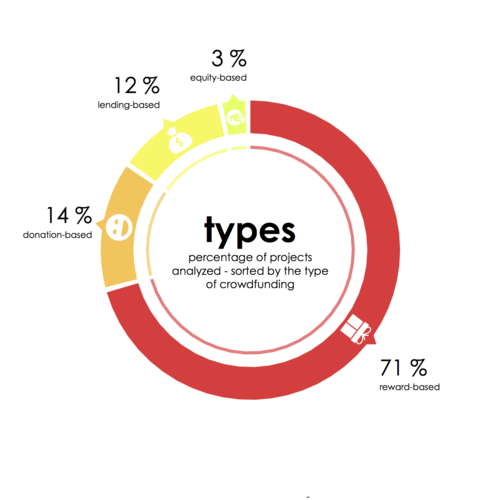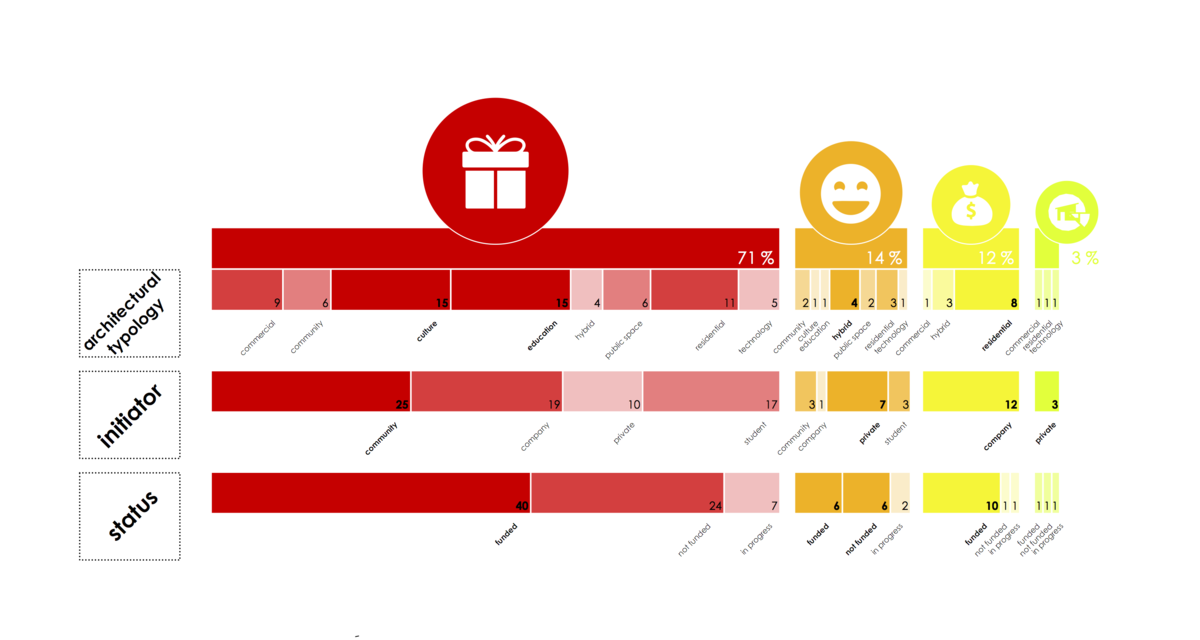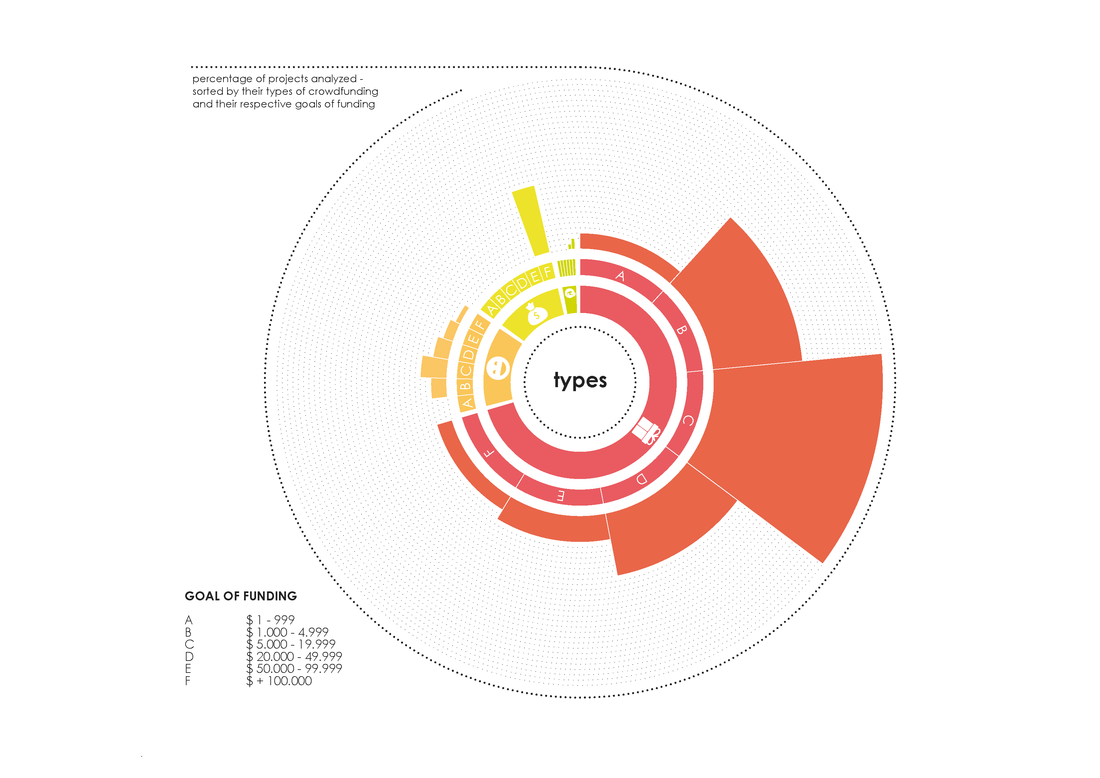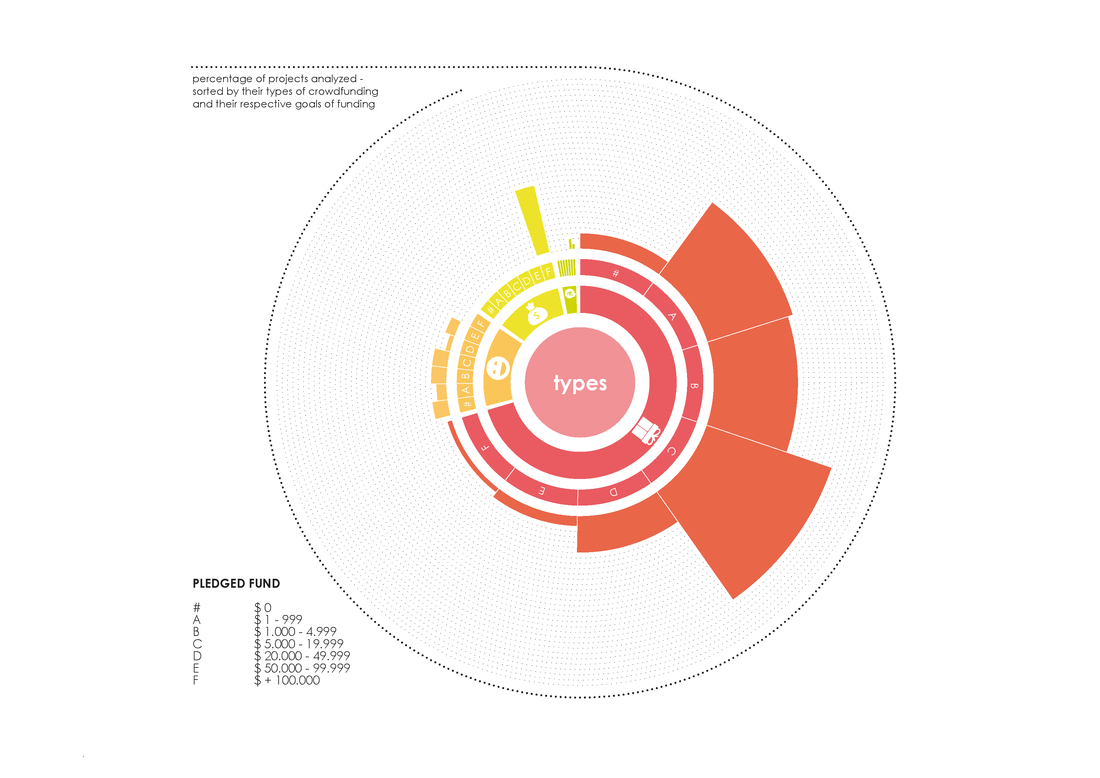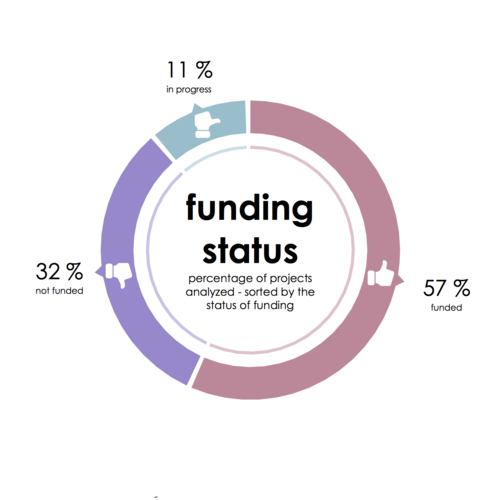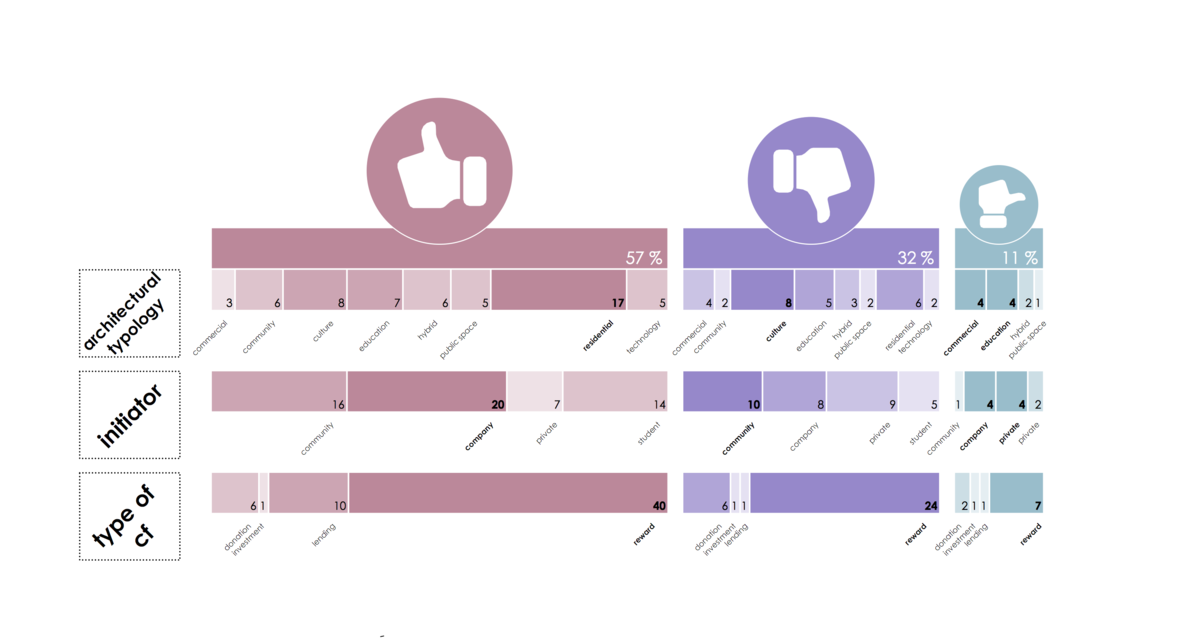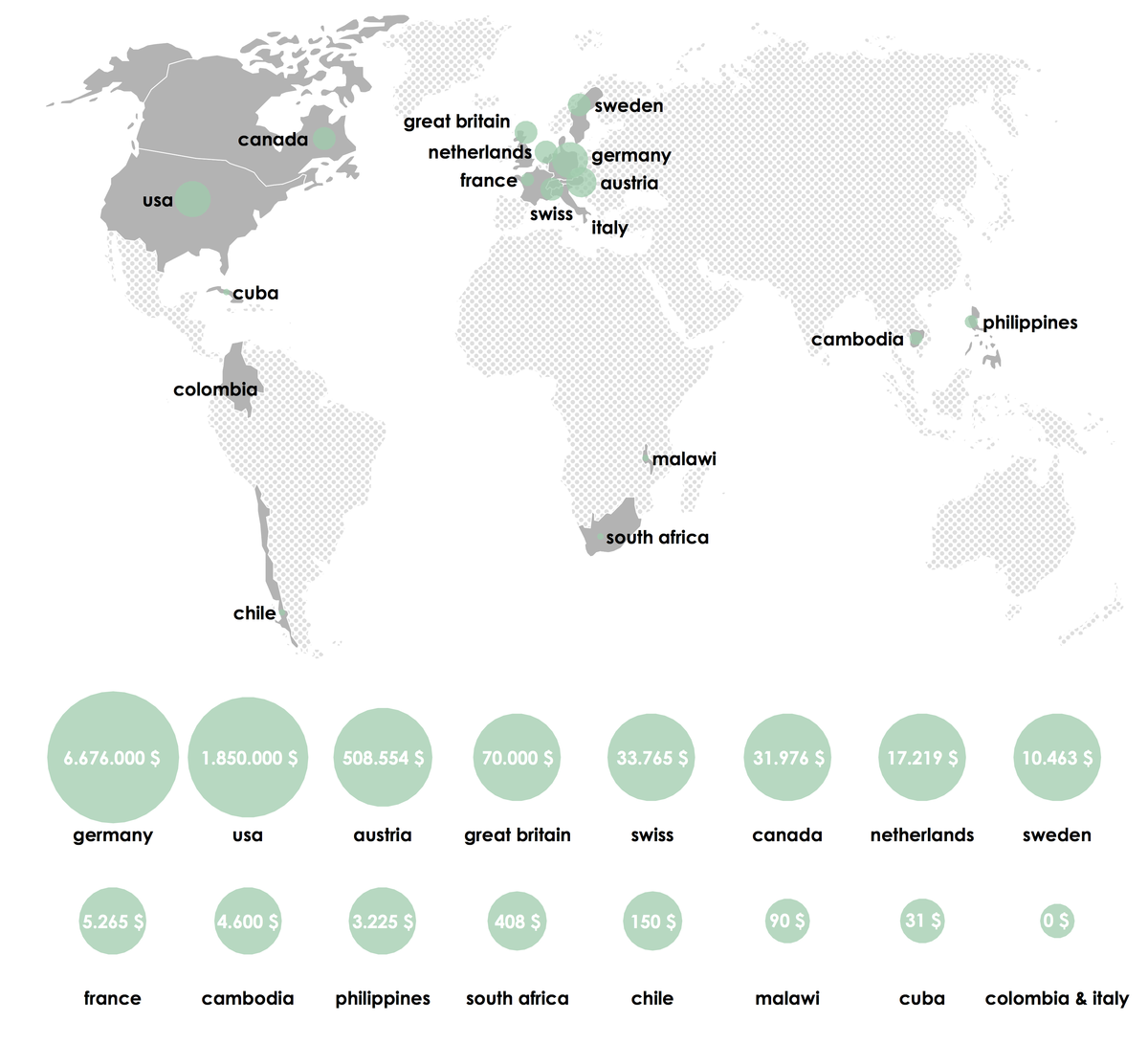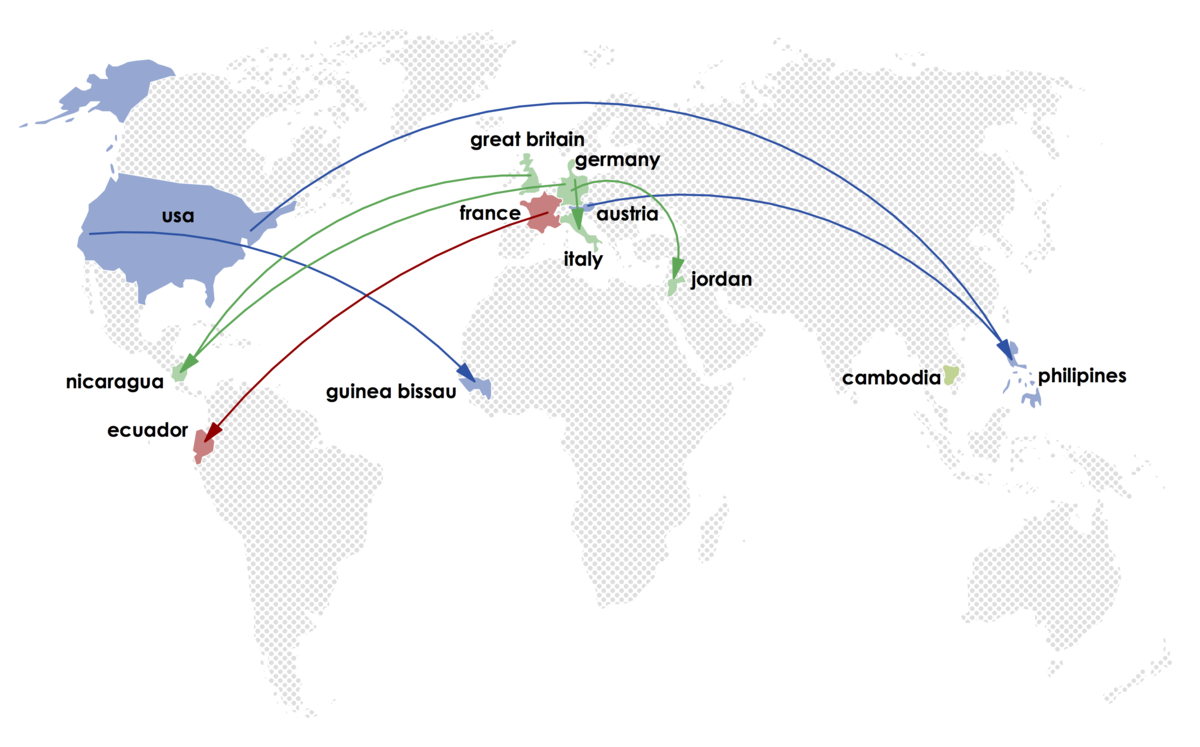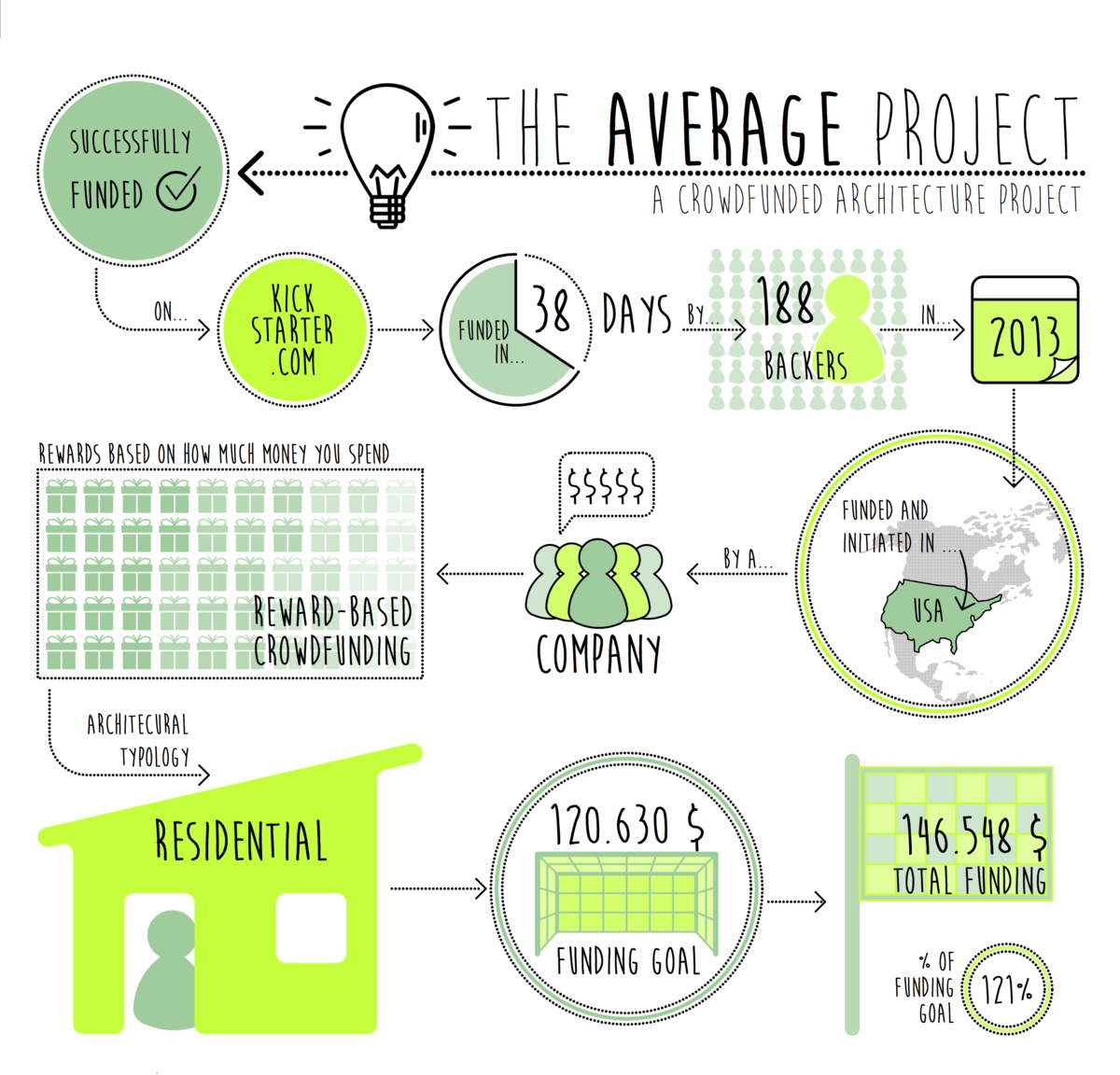Difference between revisions of "100 projects of crowdfunding in architecture"
Wikidoctor (Talk | contribs) |
Wikidoctor (Talk | contribs) |
||
| Line 1: | Line 1: | ||
| − | |||
| − | |||
[[File:100 kreis.png|frameless|left|300px]] | [[File:100 kreis.png|frameless|left|300px]] | ||
Revision as of 11:50, 29 April 2015
Crowdfunding, in architectural context in particular, is a quite new development. People have the chance to take part in the process of planing or the realisation of architectural projects, to bring in their ideas and provide money to support a cause they care about. It can been seen as a new tool to create a new built environment for themselves or others in need.
The research took place from October to November 2014. The analysis, based on one hundred architectural projects, illustrates who participates, where the projects take place, what are the most common funding types are, how much money is provided and which building typologies are being developed and built. The research has been summarised in an excel-list and afterwards sorted and interpreted in sub items. This list is a snapshot representativ for currently funded, not funded and on going projects.
Contents
[hide]websites
The projects have been selected from the following websites:
- 40 projects - kickstarter.com
- 10 projects - fundrise.com
- 10 projects - startnext.de
- 4 projects - makearchitecturehappen.com
- 3 projects - fundedbyme.com
- 2 projects - 100-days.com
- 2 projects - kisskissbankbank.com
- 2 projects - visionbakery.com
- 2 projects - spacehive.com
- 2 projects - all-zesamme.de
- 2 projects - crowdfunding.at
- 1 project - kapitalfreunde.de
- 1 project - crowdcube.com
- 1 project - globalgiving.org
- 1 project - gofundme.com
- 1 project - projektstarter.ch
- 1 project - rockethub.com
- 1 project - sponsume.com
- 1 project - 1000x1000.at
- 1 project - wemakeit.com
- 1 project - companisto.com
- 1 project - nordstarter.org
As shown in the graphic, most architectural projects were found on kickstarter.com, which also depends on the fact, that kickstarter.com is the biggest and most known international website for crowdfunding projects in general. Probably the most known German website is startnext.de.
Projects on websites, which are visited more frequently tend to be funded more often, because the chance to get more backers is obvious. Most of the time the big websites are also more clearly structured, so you can find the information you need very quickly. This could also be a reason, why backers spend their money on this websites, because they feel more save or included.
Fundrise.com represents a special case. The projects found on this website are only lending-based and most of them belong to the subdivison ‘residential‘. People lend their money in forms of loans to the initiator to realise the projects and get it refunded in a predeterminated period with a set interest rate.
icons
In all graphics the following icons were used to visualise and help understand the main statement quicker. This is the key to the meanings:
building typologies
Since the research only includes projects in an architectural context, it was highly important to see what kind of architectural typologies were mostly funded. The projects have been divided into following categories:
- Commercial - projects on any matter of business
- Community - projects provided for the community and their needs
- Culture - projects inluding all forms of fine and performing arts
- Education - projects aiming to spread knowledge
- Hybrid - projects with a mix-used purpose
- Public Space - projects taking place outdoors including landscape architecture
- Residential - projects including all forms of housing and living
- Technology - projects and ideas with the aim to upgrade buildings (e.g. sustainability)
The group of residential buildings is the most initiated followed equally by education and culture. You can read in the graphic below, that residential buildings are also very likely to be funded and it‘s the only typology (exept hybrid, which also includes residential in this case), where a lending-based type of crowdfunding exists. But still in every typology reward-based crowdfunding comes in first place.
For the ,good causes‘ like education, culture, community and even public space, the community itself tends to be the biggest group of initiators and seems to be quite good funded. For residential buildings a lot of companies start the projects, where also a quite high amount of money is involved. The following two circle shaped graphics show quite easy, how much money is searched (first graphic) and provided (second graphic) for in the different types of typology. The amounts of money have been divided into several groups and listed in the graphic how often they occur in which typology.
graphics
overlay of categories
This graphic shows the overlay of the analysed building typologies divided by the categories initiators, types of crowdfunding and funding status. The numbers illustrated in the graphic demonstrate the actual number of projects whereby the most remarkable ones have been highlighted.
funding goals of building typologies
In the circular diagram below, the percentage of projects analysed sorted by their architectural typology and their respective goal of funding is shown. The funding goals have been classified in six categories ranging from A (1$) to F (+100.000$). The radial bars visualise the number of projects according to their funding category.
pledged fund of building typologies
The percentage of projects analysed sorted by their architectural typology and their respective pledged fund is shown in the circular diagram below. The pledged funds have been classified in seven categories ranging from # (0$) to F (+100.000$). The radial bars visualise the number of projects according to their funding category.
initiators
The research showed that the people, who start up projects on crowdfunding websites, can be summed up in four groups:
- company
- community
- private
- student
On the graphic to your right you can see that the four groups are almost represented equally.
company
Companies in our research initiate projects a litte bit more often than the other groups. They are mostly reward based, only one project is donation based but all of the lending based projects belong to companies. The funding status is good - twenty out of thirtytwo were funded. Residential buildings are high in number of the building typologies, the rest is a mixture but there are projects with the topic technology.
community
Almost all projects of communities are reward based, only three are donation based. The chance these projects are funded are a litte bit higher than fifty per cent. Culture buildings are the priority but they commit themselves for all kind of topics. the funding goals and the pledged money are in the middle field - the project involve around 5.000 to 20.00 Dollars.
private
Projects of private persons are most of the time reward based, followed by donation based, but also all three investment project were initiated by a private person. Their projects attend in all fields, but unfortunately private persons have the highest number of not funded projects, although the funding goals are not so high excluding the investment projects.
student
Student make their projects reward or sometimes donation based. Fourteen out of twenty have been funded, so they are quite successful. Maybe also because their funding goal is according to the research the lowest. Most of the time they are searching for 1.000 to 20.000 Dollars. The typolgies include all groups but as an intressting fact, five out of seven technology projects were initiated by a student.
graphics
overlay of categories
This graphic shows the overlay of the analysed initiators divided by the categories building typologies, types of crowdfunding and funding status. The numbers illustrated in the graphic demonstrate the actual number of projects whereby the most remarkable ones have been highlighted.
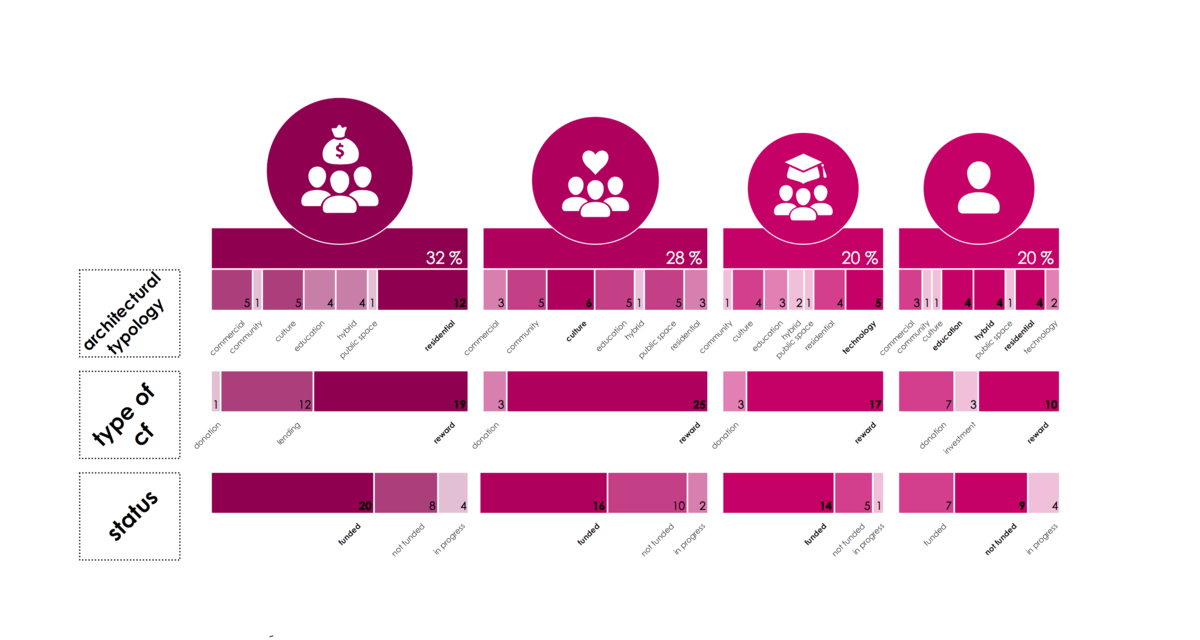
funding goals of initiators
In the circular diagram below, the percentage of projects analysed sorted by their initiators and their respective goal of funding is shown. The funding goals have been classified in six categories ranging from A (1$) to F (+100.000$). The radial bars visualise the number of projects according to their funding category.
pledged fund of initiators
The percentage of projects analysed sorted by their initiators and their respective pledged fund is shown in the circular diagram below. The pledged funds have been classified in seven categories ranging from # (0$) to F (+100.000$). The radial bars visualise the number of projects according to their funding category.
types of crowdfunding
There are four types of crowdfunding known so far:
- reward based crowdfunding: funders provide money in exchange for rewards based on levels that correspond to pledge amounts
- donation based crowdfunding: funders donate money to support a cause they care about
- lending based crowdfunding: funders provide money in the form of loans that they will get refunded over a pre-determined timeline with a set interest rate
- equity based crowdfunding / crowdinvestment: funders provide money in exchange of actual shares in a private company for capital
reward based
Reward based crowdfunding is the major part of the four types of crowdfunding. More than half of the projects are funded. Most of the time communities tend to start up reward based projects, but companies, students and private persons are also involved quite often. The building typologies are a mixture of everything education and culture are on top. The common funding goals and the pledged funds are both in the middle field starting at 1.000 Dollars up to 50.000 Dollars. The rewards are different for each project - some initiators are going to write you a thank-you-letter, while others give you a cup or the t-shirt, but there are also rewards linked to the actual projects, like you get a free stay in a hotel or your name is written on some part of the projects, so you are really connected to the project.
donation based
Donation based projects are the second largest group of the research. Almost half of them are aid projects and most of the time started off by private persons. They are also small projects, who can not give something in reward and really depend on the money.
lending based
The lending based projects are all instigated by companies and the projects tend to be residential. Ten out of 12 have been funded and one is still in progress. Its a new form of loans besides the old banking system. In the graphic below you can see that they only deal with huge amounts of money like 100.00 Dollars and more.
equity based
Equity based projects are only three out of one hundred projects. They are initiated by private persons and the typologies are a mixture of commercial, residential and technology. Like lending-based projects the amounts of money involved are quite big - 50.000 dollars and more.
graphics
overlay of categories
This graphic shows the overlay of the types of crowdfunding divided by the categories building typologies, initiators and funding status. The numbers illustrated in the graphic demonstrate the actual number of projects whereby the most remarkable ones have been highlighted.
funding goals of types of crowdfunding
In the circular diagram below, the percentage of projects analysed sorted by their type of crowdfunding and their respective goal of funding is shown. The funding goals have been classified in six categories ranging from A (1$) to F (+100.000$). The radial bars visualise the number of projects according to their funding category.
pledged fund of types of crowdfunding
The percentage of projects analysed sorted by their type of crowdfunding and their respective pledged fund is shown in the circular diagram below. The pledged funds have been classified in seven categories ranging from # (0$) to F (+100.000$). The radial bars visualise the number of projects according to their funding category.
funding status
The projects for the excel chart were not chosen completely random, although, besides kickstarter.com, startnext.de and fundrise.com, it was really hard to find architectural crowdfunding projects and we almost picked everything we could find. But for example on kickstarter.com are many many more not funded projects, still we decided to chose more funded projects from this website. Many of the not funded projects do not have a good description, no graphic material and missing informations, so you can see there there was not a lot dedication or ambition behind it. This graphic is very important to show which architectural typologies, which initiators and which type of crowdfunding are most likely to be funded or not funded.
architectural typologies
Residential is the group with the most funded projects, but for example five out of seven technology projects were funded, which is also very good on average. Most not funded projects are culture projects, but in contrast to eight not funded projects, they also have eight funded projects.
initiators
The most funded initiator is the company. Maybe the know how to be successful or have more time and money to invest in their project. Also many projects of companies are lending-based or investment-based and they tend to be quite successful. A lot of project initiated by communties are not funded, but even more are funded. Also students get funded very often, while other private persons seem to be the weakest group.
types of crowdfunding
Reward-based projects are the most funded and the most not funded type of crowdfunding at the same time. That's possible because reward-based projects are the largest type of crowdfunding in general - 71 per cent of all types together. Ten out of twelve lending-based were funded. This shows that crowdfunding really can be seen as new form of loans besides the old bank system. Donation-based projects are funded and funded equally, which probably means it just depends on the project.
graphic
overlay of categories
This graphic shows the overlay of the analysed funding statuses divided by the categories building typologies, initiators and types of crowdfunding. The numbers illustrated in the graphic demonstrate the actual number of projects whereby the most remarkable ones have been highlighted.
locations
Even though the research conducts only on English or German speaking websites, the projects take place all over the world. This graphic gives an short overview of the initiators origin country and the maximum amount of money one has pledged for. The German project is one out of three equity-based crowdfunding projects in the excel chart. Its goal was to gain 1.25 Mio Dollars, but it turned out people invested almost five and a half time more money than the actual goal. The second and third largest projects in the USA and in Austria are lending-based. Great Britains most successful project is about public space to turn an concrete flyover in Liverpool into an urban park and it's donation-based. Not that successful is the project in Colombia about an ecoclimate green school for the tropics. Yet it didn't receive any money, but the donation-based project is still in progress.
aid projects
In the research we came across quite a lot of aid projects - in numbers: 17 out of 100 - which are donation- or also even more often reward-based. Many rewards are thank-you-letters, thank-you-drawings or some other kind of appreciation, but still they are gifts. Most of the crowdfunding projects are residential buildings for refugees or other people in need. The initiators come from all groups of initiators, but the majority of cases are still communities and students. This map visualises where the aid-projects take place and where their initiators come from.
The aid projects are mostly initiated in west-european countries and north america, while the actual projects take place in southern countries. If an aid project is for example initiated in the USA for the USA, it is not so likely to be funded, while for example Cambodia initiated and funded a project for themselves. Unfortunately there are no informations where the funders of the projects come from. Maybe the initiators themself can see, where their backers come from, but for the rest it is not possible.
the average project
The average project is a fake project playing with the stereotypes of the research according to the excel chart. The graphic gives an overview what the most average project would look like and its characteristics.
